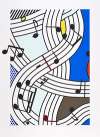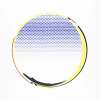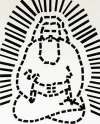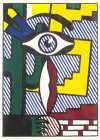Expressionist
Woodcut
Roy Lichtenstein's 1980 Expressionist Woodcut series originated in a visit to Los Angeles, where he was introduced to Robert Gore Rifkind's collection of German Expressionist prints and illustrations. Inspired, Lichtenstein dedicated this series to the stylistic elements he observed in the movement: heavy black linework, bold colours, and angular figures.
Roy Lichtenstein Expressionist Woodcut for sale
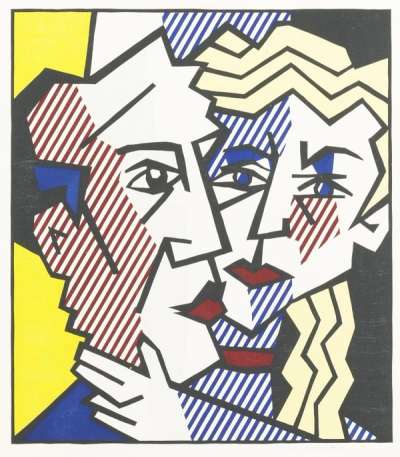
£24,000-£35,000
$45,000-$70,000 Value Indicator
$40,000-$60,000 Value Indicator
¥220,000-¥320,000 Value Indicator
€28,000-€40,000 Value Indicator
$240,000-$350,000 Value Indicator
¥4,600,000-¥6,700,000 Value Indicator
$30,000-$45,000 Value Indicator
TradingFloor
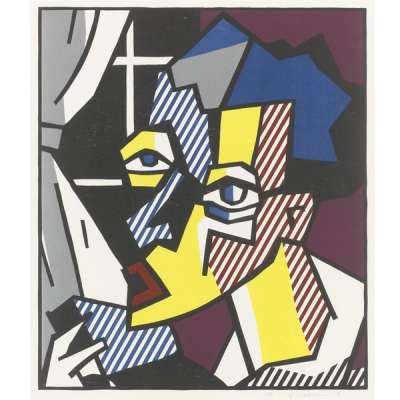
£28,000-£40,000
$50,000-$80,000 Value Indicator
$50,000-$70,000 Value Indicator
¥260,000-¥370,000 Value Indicator
€35,000-€45,000 Value Indicator
$280,000-$400,000 Value Indicator
¥5,320,000-¥7,600,000 Value Indicator
$35,000-$50,000 Value Indicator
TradingFloor
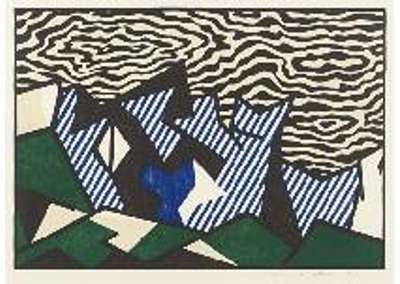
£14,000-£21,000
$27,000-$40,000 Value Indicator
$24,000-$35,000 Value Indicator
¥130,000-¥190,000 Value Indicator
€16,000-€25,000 Value Indicator
$140,000-$210,000 Value Indicator
¥2,660,000-¥3,990,000 Value Indicator
$18,000-$27,000 Value Indicator
TradingFloor

£13,000-£20,000
$25,000-$40,000 Value Indicator
$22,000-$35,000 Value Indicator
¥120,000-¥180,000 Value Indicator
€15,000-€23,000 Value Indicator
$130,000-$200,000 Value Indicator
¥2,470,000-¥3,800,000 Value Indicator
$17,000-$25,000 Value Indicator
TradingFloor
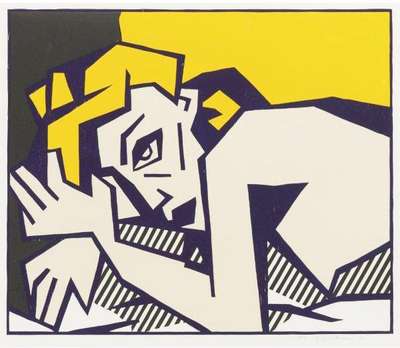
£21,000-£30,000
$40,000-$60,000 Value Indicator
$35,000-$50,000 Value Indicator
¥190,000-¥280,000 Value Indicator
€25,000-€35,000 Value Indicator
$210,000-$300,000 Value Indicator
¥3,990,000-¥5,700,000 Value Indicator
$27,000-$40,000 Value Indicator
TradingFloor
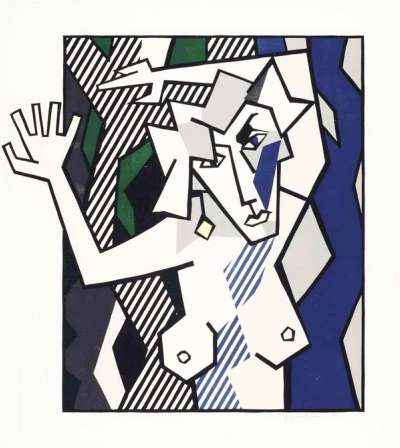
£17,000-£25,000
$35,000-$50,000 Value Indicator
$29,000-$45,000 Value Indicator
¥160,000-¥230,000 Value Indicator
€20,000-€29,000 Value Indicator
$170,000-$250,000 Value Indicator
¥3,210,000-¥4,720,000 Value Indicator
$22,000-$30,000 Value Indicator
TradingFloor
Sell Your Art
with Us
with Us
Join Our Network of Collectors. Buy, Sell and Track Demand
Meaning & Analysis
The visual legacy of Liechtenstein, is one categorically entangled with Pop Art and epitomised through the medium of woodcuts, as this series shows. First educated at the Art Students League, he went on to achieve an M.F.A from the School of Fine Arts at Ohio State University in Columbus. In the early 1960s, he introduced his iconic paintings consisting exclusively of comic-strip figures and Ben Day Dots. From the 1970s onwards, the artist probed another enduring artistic issue; the concept of style.
The visual legacy of Lichtenstein, composed of appropriated images of American popular culture, is categorically entangled with Pop Art. His iconic revisions of the superficial world of commodities is usually characterised by flat colour fields and geometrical forms.
Yet, despite his focus on contemporary imagery, Lichtenstein repeatedly turned his attention to art history for inspiration. The artistic heritage of Futurism, Cubism, Surrealism and Expressionism feature regularly in his work.
Lichtenstein’s seven part Expressionist Woodcut series of 1980 originated during one of his visits to Los Angeles. In 1978 he was introduced to prominent art collector and philanthropist Robert Gore Rifkind’s collection of German Expressionist prints and illustrations. Inspired, he decided to appropriate the stylistic elements he observed.
Lichtenstein notably flattens the complex layers of heavy impasto colours present in Expressionist paintings into forms of appropriated imagery. The Expressionist Woodcuts primarily aim to display the hallmark techniques and materials applied by the Expressionists. As is customary for Lichtenstein, he renders the source material through the commercial overexposure of repetition and seriality.


